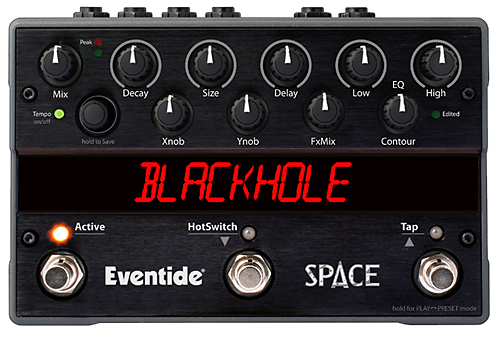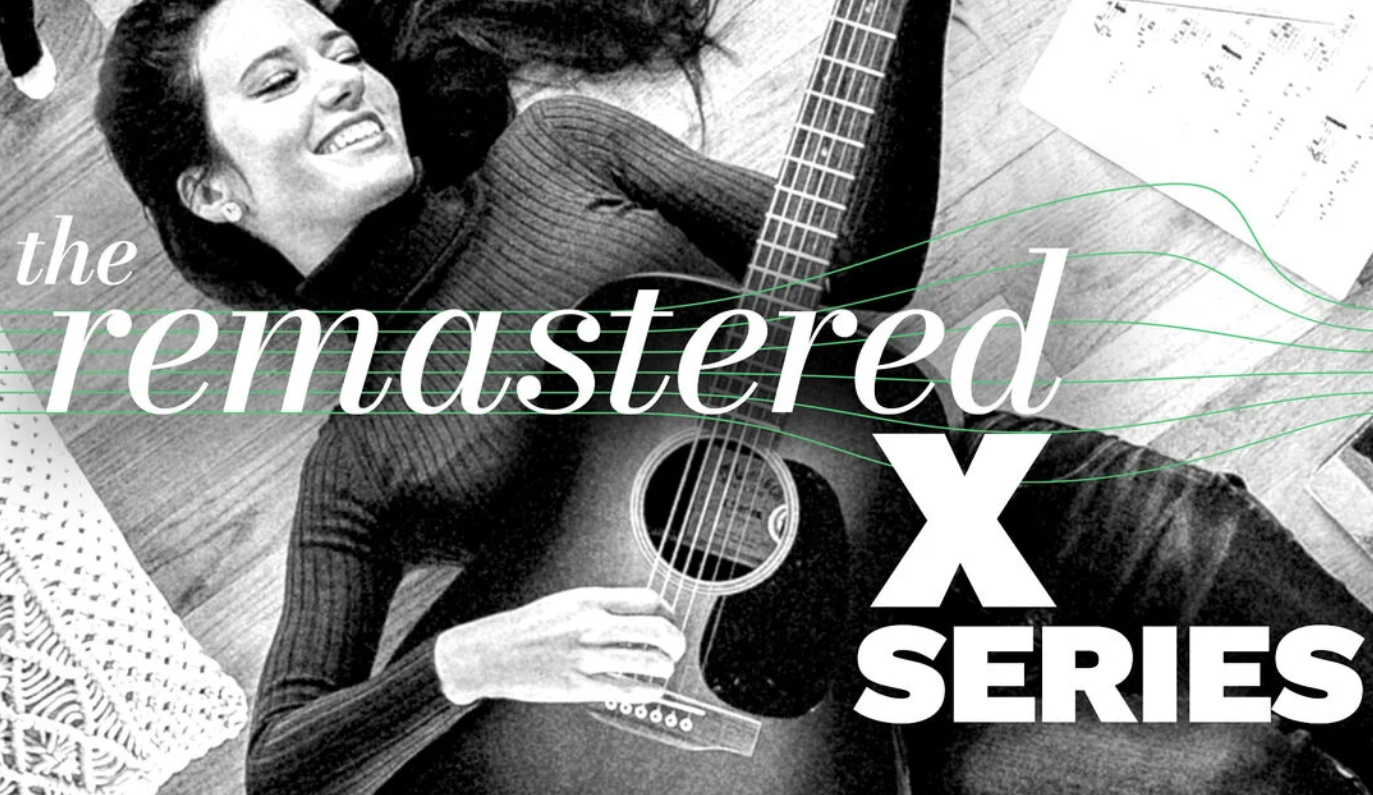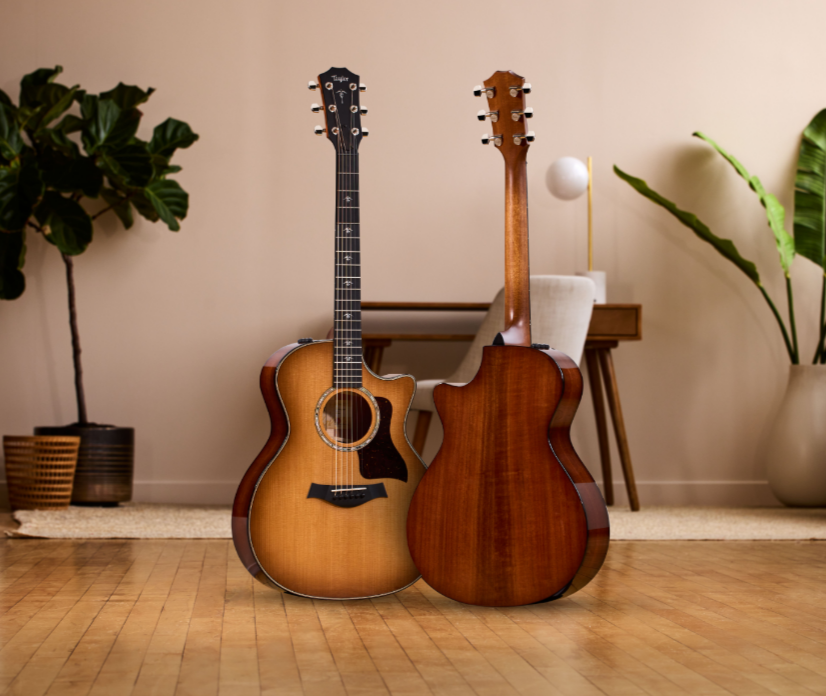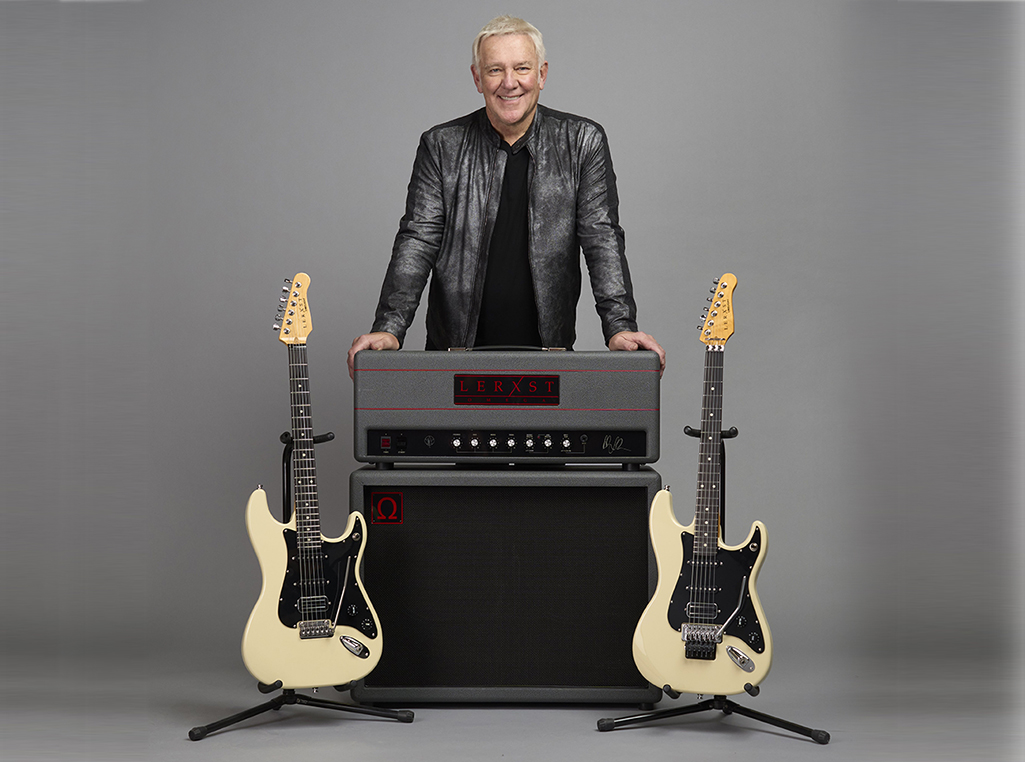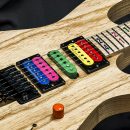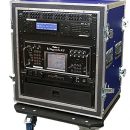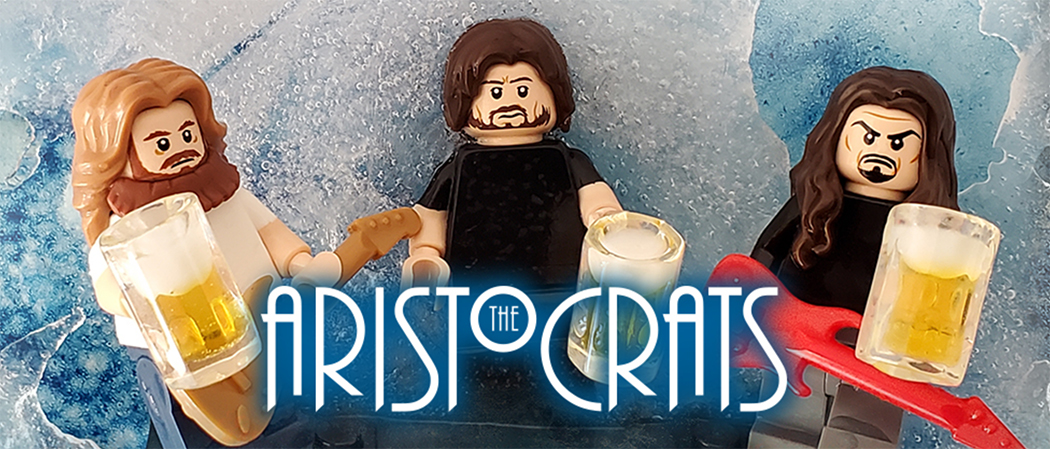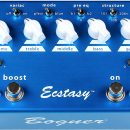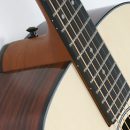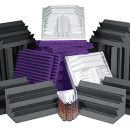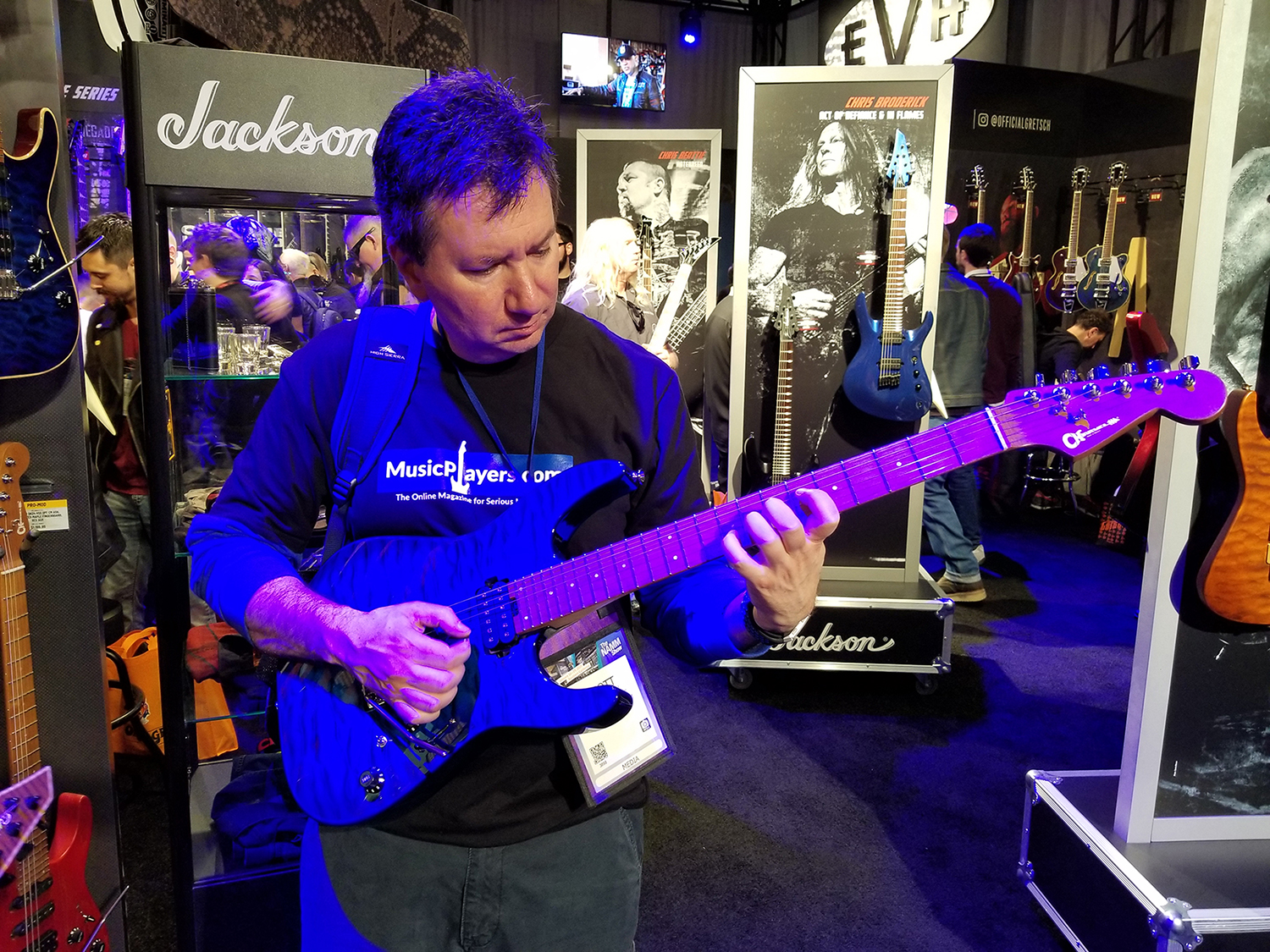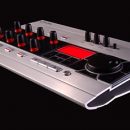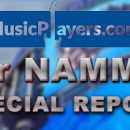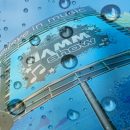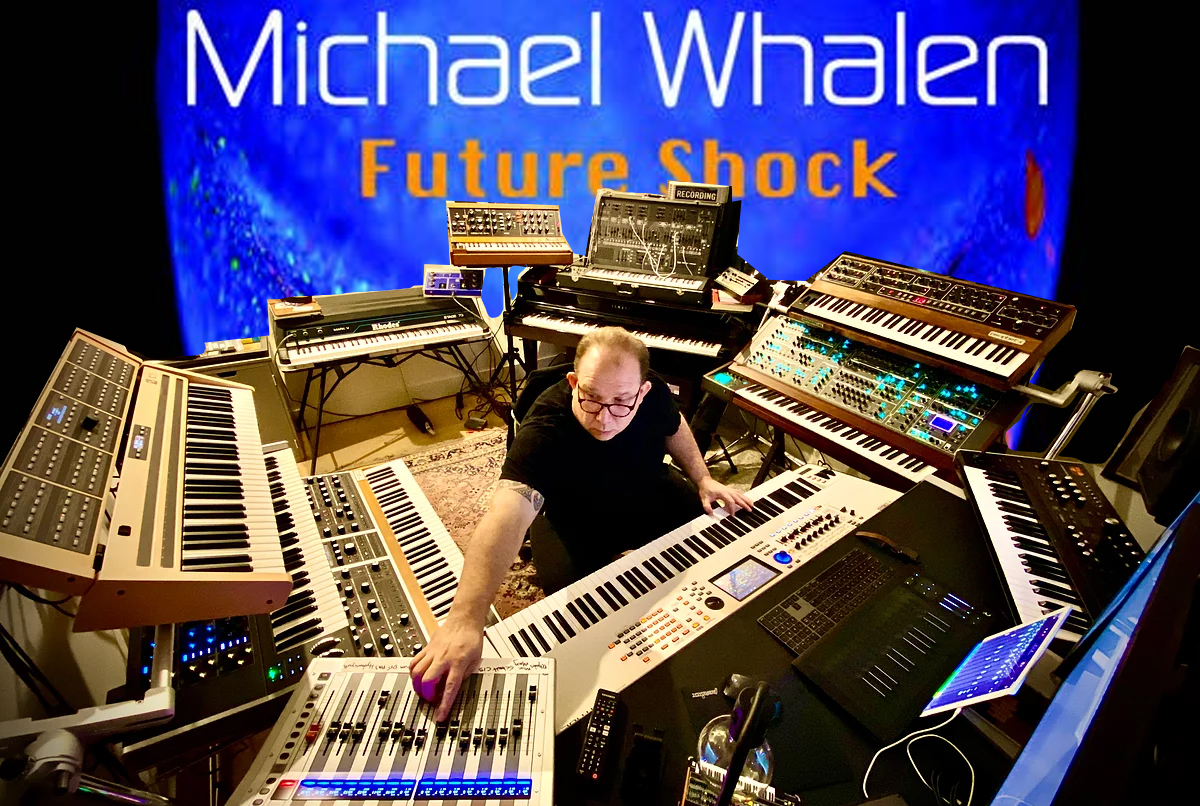 Space, the final reverb pedal. Its ongoing mission: to fill your ears with cavernous echoes, haunting soundscapes, cathedral-like chime, and on occasion, to deliver familiar room and plate reverbs that sound, dare we say, vintage.
Space, the final reverb pedal. Its ongoing mission: to fill your ears with cavernous echoes, haunting soundscapes, cathedral-like chime, and on occasion, to deliver familiar room and plate reverbs that sound, dare we say, vintage.
Eventide’s line of pedals need no introduction at this point in time, but for the uninitiated, it’s easy enough to sum them up as follows: legendary Eventide studio effects re-engineered into a new form factor with all the control features a guitarist could ever need (and understand) while lacking the complexity of Eventide’s traditional studio hardware.
| Category | Value | Rating |
| Features | 20% | |
| Usability | 25% | |
| Sound | 25% | |
| Documentation & Support | 10% | |
| Price | 20% | |
| OVERALL RATING = 3.6, which earns it a WIHO Award! 3.6 stars or better: Outstanding, WIHO Award 3 stars or better: Worth considering 2 stars or better: Suited to specific needs 1 star or less: Not recommended |
||
The latest pedal in the series, Space, delivers stunning reverb algorithms transplanted from the company’s studio gear (namely the H8000FW and Eclipse V4). In short, the sound is remarkable, as if you miked your cabinet in the studio and patched an Eventide reverb unit into the channel.
Space contains fantastic traditional reverbs: plates, rooms, and springs that would fool any vintage tube amp aficionado, but as great as those sounds are, half of our editorial team drools over the more ethereal soundscapes that Space generates. Effects like Shimmer and Blackhole will have sonic adventurers losing sleep for weeks on end.
With stereo inputs and outputs, deep programmability, external control via MIDI or expression pedals, and memory for up to 100 sound presets, it’s easy to see that once again, Eventide has delivered a rack processor stuffed into a pedal. Space has the familiar Factor-series pedal interface that lets you cover the basics in a matter of minutes. But once you’re ready to embrace its advanced capabilities, you’ll find that Space boldly goes where no reverb pedal has ever gone before.
Features
Space features twelve reverb algorithms starting with the classics: Hall, Room, Plate, Spring, and Reverse. DualVerb is just what the name implies, and from there we leave this universe behind and head for deep space:
ModEchoVerb: Reverb with filter sweeps, flanging, and chorused reverb tails. You can use this algorithm to create chorus or flanger effects, delays, reverbs, or all this combined.
BlackHole: Eventide’s description references a black hole, from which gravity can’t escape, then babbles about ethereal stuff. Think H8000 and its cathedral-type of reverbs and you’re in the ballpark. Got it?
MangleVerb: Detuning, soft clipping, or overdriven reverb tails. Based on an Eclipse algorithm, this one lets you dial in some distortion.
TremoloVerb: Large reverb with tremolo.
Dynaverb: Reverb from the Eventide Eclipse plus a model of the Eventide Omnipressor equals dynamic reverb. Yes, you know just what that sounds like. No? Then lets take some reverb and add a choice of gating, expansion, compressing, or Eventide’s “dynamic reversal” which can squash loud sounds while simultaneously increasing the volume of quiet sounds.
Shimmer: The algorithm that has so many U2 and Brian Eno fans rejoicing, Shimmer adds pitch-shifted reverb tails to generate cathedral-like chime to your clean tones without needing to invest in Eventide’s classic studio rack gear.
Space has memory for 100 presets, and access is via a pair of up/down footswitches (heavy-duty, Carling style), rotating the Preset knob, or via external MIDI control. The third footswitch controls the effect’s Active/Bypass status. The footswitches have multiple functions based on the operating mode the pedal is set for (more on this in Usability).
Space features a relay, buffered bypass, but you can alternately set the pedal for hard bypass operation if you prefer. The pedal also offers a selectable Kill Dry feature, handy if you plan to use the Space pedal with a parallel effects loop. Speaking of effect loops, Space works great in front of your amp too, with toggle switches on the rear for adjusting input and output levels to match your preferred method of hookup.
Besides typical mono operation in a guitar rig, Space features both stereo outputs and stereo inputs — especially handy for players with stereo rigs.
As with other pedals in the series, construction is rugged, with a solid metal casing and rubberized knobs. Lots of them. Eleven. Some of the knobs have constant functions, while the Xnob and Ynob assume different control properties depending on the reverb algorithm in use.
 As if the three footswitches aren’t enough, make room on your pedalboard for some accessories: there are input jacks for an expression pedal as well as up to three momentary footswitches. Some likely uses for these extra foot switches would be to provide a dedicated Tap Tempo input, or for instantly switching the pedal’s operational modes. You can also use momentary switches to toggle between two parameter values in your effect.
As if the three footswitches aren’t enough, make room on your pedalboard for some accessories: there are input jacks for an expression pedal as well as up to three momentary footswitches. Some likely uses for these extra foot switches would be to provide a dedicated Tap Tempo input, or for instantly switching the pedal’s operational modes. You can also use momentary switches to toggle between two parameter values in your effect.
Space offers a wealth of programming options (as well as usability options). There’s a lot you can do to manipulate sounds both via the extensive sound shaping controls as well as via real time operation. You can, for example, assign multiple effect parameters to a single expression pedal to really transform your sound while playing.
Space also features a special Catch-up feature that is useful if you rely upon the knobs for real-time sound manipulation. When enabled, touching a knob doesn’t begin to manipulate your sound until you’ve turned it past the position where the knob’s initial value was set in your preset.
Space has a full complement of MIDI controllable features, and besides Tap Tempo, the pedal can also sync to MIDI clock. You can very easily stick the Space pedal on a shelf in your rack and have complete control over its functionality from your MIDI foot controller.
A USB jack allows for software/firmware updates.
Usability
Basic operation of Space is straightforward once you understand the two modes of operation, despite the plethora of knobs and switches you’re confronted with.
Space is similar in many ways to the other Factor-series pedals, and in similar fashion, holding down the Tap Tempo button toggles between Preset mode and Play mode (it’s Bank mode on the other pedals, but Space just uses a numerical sequence of presets).
In Preset mode, the left footswitch controls Active/Bypass status of the effect, and the other two footswitches scroll up and down through the presets. Note that you can also select presets by rotating the Preset knob on the top of the Space pedal. As soon as you select a new preset, the reverb algorithm used in that effect displays its name briefly on the large 12-character display. It takes roughly half a second for an algorithm to load — we found it best to select a preset at the start of a song and use it throughout rather than trying to load presets mid-song while playing.
Switching to Play mode, while the left-most footswitch remains in control of Active/Bypass, the other pedals assume new functions. The far-right footswitch becomes a Tap Tempo pedal, and the middle footswitch assumes a HotSwitch function. This handy feature enables you to assign a second set of values to any/all of the controls used by your preset (while keeping the algorithm unchanged). This way, you can toggle back and forth between two different effects instantly.
We liked that when applying over-the-top effects, the HotSwitch could function in a temporary mode. Rather than toggling between Settings A and Settings B, simply holding down the footswitch enabled our alternate settings, and then lifting our foot off the pedal instantly switched Space back to the preset’s primary settings.
The auxiliary input jack is useful if you intend to jump back and forth between operating modes. Rather than connecting a single footswitch that toggles between modes for you without having to hold down the right-most footswitch, or assigning it to be your dedicated Tap Tempo control, you can attach as many as three footswitches (with proper cabling, or an external switching system), and you can operate the Space pedal with all six footswitches controlling both Preset- and Play-mode operations.
It’s easy to get lost in Space, as there are programmable options to do just about whatever you’d like. For example, you can assign each external footswitch to toggle between two parameter values. And we haven’t even connected an expression pedal yet!
Happily, configuring your expression pedal is as simple as with other Eventide pedals. We simply stepped on our expression pedal to a fully heel-down position and adjusted a desired parameter knob for the desired Low value, and then raised the pedal to its full Up position and adjusted the same knob to our preferred maximum value — that’s it! If you adjust settings on multiple knobs, all of those parameters will adjust in real time from your pedal operations. We used a BOSS FV-500H expression pedal and had no trouble.
Sound
Calling Space an effect pedal is sort of absurd because, well… it does look like a pedal, but as with the other Eventide pedals, it doesn’t sound like a pedal. It’s really a studio processor in a tiny box with some buttons you can hit with your feet, and as such, it sounds fantastic. If you’re a bread-and-butter kind of player who loves the spring reverb in your amp and consider that to be the start and end to your effects, you’re knee deep in the wrong product review. Sure, Space has a kick-ass sounding spring reverb — it really added some vintage tone to a few of our amps that lacked onboard reverb units. It also has beautiful halls, rooms, and great sounding plates. But this pedal is going to be more exciting to the sound-designer types of guitarists playing alternative, ambient, and progressive styles of music.
If your taste in effects lends itself to The Edge, Brian Eno, Jamie West-Oram, Jonny Greenwood and Ed O'Brien, consider this pedal pay dirt in terms of the kinds of atmospheric sounds you can create. It’s easy to get sucked into another dimension with the tones that Space creates, and other than a few tweaks to the mix control, we didn’t even begin to explore customizing the presets until weeks into our adventure with this thing.
The 100 presets cover a lot of ground, and to best take advantage of these, you’ll want to at least start with an expression pedal connected to Space. Many presets were created by top producers, engineers, and experimental recording artists (all identified in the documentation), and you can expect it to take a long time to really check out what Space can do. This isn’t the kind of effect pedal where you sit down and just quickly flip through a bunch of presets. You would completely miss the ethereal beauty of its sounds. Many of the sounds are indeed like black holes: they suck you in to your own little world of inspiration and you just keep on jamming until you pass out.
Of course in your first session, auditioning the first twelve presets makes the most sense as a logical place to start because these are the twelve basic algorithms from which all the other presets were created.
Spending time here, you get to appreciate the quality of the reverbs themselves in more traditional roles. We especially loved the plate and spring reverbs for the classic quality they imparted on our guitar tones. The halls and rooms offered up reverb with familiar Eventide clarity — all the effect, crisp definition of tone, and no noise. It’s interesting to note that Eventide really nailed that precarious balance between warmth and knife-edge clarity that has often times left digital effects sounding cold or sterile.
To describe the “spacey” effects in words is almost as challenging as what the engineers at Eventide faced when trying to describe in the documentation what they stuffed inside this box. Ethereal, ambient, otherworldly, spacey, sinister, haunting — to sit with Space and play it, you’d come up with those words, but just reading this review, it’s hard to do any better.
Some of our favorite sounds really transformed our guitars into more synth-like tone machines. We jammed endlessly in our creation of motion picture sound effects, playing riffs that bubbled, fed back, shifted in pitch, and had bell-like keyboard pads in the background. The live soundscapes we were painting sounded like the kind of noises that sound designers sculpt in the recording studio with keyboards and signal processing equipment, but it all came from our guitars.
We especially loved using the Piezo acoustic output from some of our guitars to create spacey textural effects behind clean sounding arpeggios. In general, we found Space best suited to use with clean amp sounds, and although it’s beyond the scope of this review, we envision plugging this effect box (it’s still hard for us to call it a pedal) into a stereo bus on our recording console to apply these effects to other sound sources besides guitar.
One big surprise — distortion! Not only can Space introduce some light distortion into some of its more sinister tones, but it can generate some truly meaningful overdriven tones. Paired with the super-clean channel on our ENGL Powerball II head, the Space overdrive tone was beautiful, presenting a soft-clipped overdriven sound that preserved excellent note definition and sounded like a part of our amp.
Using our expression pedal with Space added real dynamics to our performance with many of the presets. Fading echoes and harmonic content in and out of the core sounds in real time similar to using a wah pedal created some remarkable tones that you wouldn’t notice if simply auditioning the sounds without a pedal plugged in.
Effects that relied on algorithms with modulation and delay did more than just create monsters from outer space. They also created beautiful clean guitar tones with chorus and flanger effects.
So in short, you’ve got killer reverbs in here, but calling this “a reverb pedal” is really inappropriate as that description covers only a fraction of the sounds it generates. I suppose if Eventide had stopped with just the basic reverb algorithms they would have called it the Reverb Factor pedal. But spend an hour or two or twelve with this thing and it’s obvious how inappropriate that name would have been. Space fits the bill to a tee. If you love the idea of stacking delay, modulation, pitch shifting, and cavernous reverb to create un-guitar-like sounds, look no further for an effects processor. Space dishes up strange-and-musically-inspiring sounds up with ease.
Audio Demo
Our editorial intern, Daniel Morrell, was immediately smitten with love for the Space pedal, so we asked him to record a demo for us. This song features three or four tracks of guitar all running through the Space pedal into a Fender Twin Re-issue amp, with the pedal in front of the amp since it lacks an effects loop. All tones, including light distortion, were generated by Space.
Song: Space Pedal Demo, © 2011 Daniel Morrell. All Rights Reserved.
Documentation and Product Support
Spaceships with plenty of documentation: a user’s guide, a preset guide, and a quick reference guide.
The Space User’s Guide is very thorough and provides detailed explanations (and illustrations) regarding all the functionality of the pedal and its myriad number of options. The Preset Guide is very handy for understanding the numerous artist and producer presets, and the quick reference guide gives you a quick look at all of the controls as they vary from algorithm to algorithm. Additionally, Eventide has links to a variety of audio/video demos online that paint a better picture of what this thing is capable of sounding like.
Price
The Eventide Space (MSRP $579) sells for approximately $500 including a power supply: pricey compared to your typical reverb pedal (even boutique ones), but if you’ve read this far, you know this isn’t your typical reverb pedal. Think of it as more of an Eventide studio processor with guitarist-friendly controls that can fit on your pedalboard, in which case it’s easy to see that you’re getting an incredible deal for such high-end studio quality sound.
Contact Information
Eventide
www.eventide.com
| Evaluation Short-List |
|

